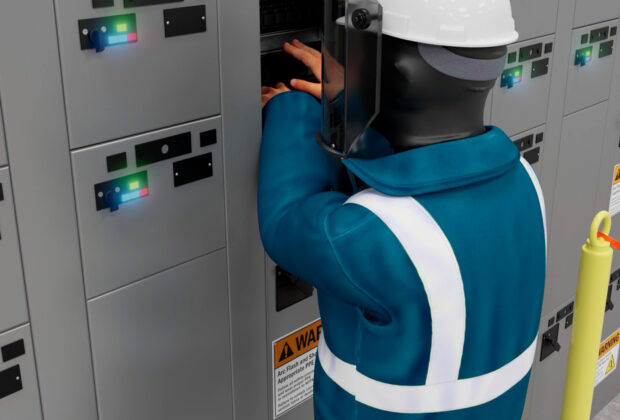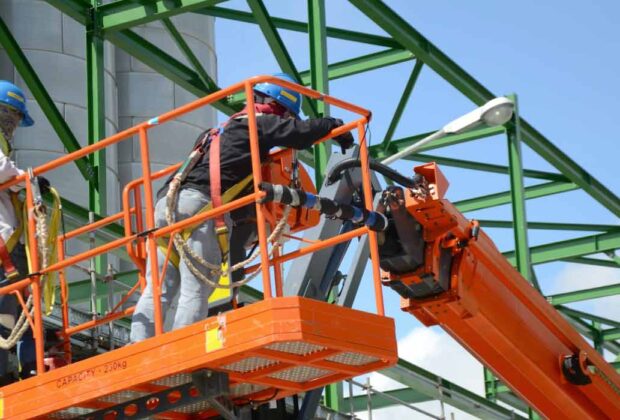Are you ready for the ever-changing regulations of shipping Lithium Cells or Batteries by ground in Canada? Lithium batteries are becoming more common every day in our work and home life. We use them in laptops, cameras, mobile phones, watches and video cameras. They are also used in some automobiles that are on our highways. The difference between a cell and a battery is, a cell is a single encased electrochemical unit (one positive and one negative electrode) with a voltage differential across it’s two terminals. When we go to the store to purchase what we call a battery for our flashlight it is really a cell (AA and AAA batteries are cells). A battery is two or more cells that are electrically connected and fitted with devices such as a case and is commonly called a “battery pack”.
There are two types of batteries, lithium metal battery and lithium ion battery. The lithium metal battery is non-rechargeable and contains metallic lithium. Lithium metal batteries are used in calculators, remote car locks and watches. Lithium ion battery is rechargeable and does not contain metallic lithium. These batteries are used for power tools, laptop computers and electric vehicles.
There are 4 UN (United Nations) numbers for lithium batteries:
- UN3090 – Lithium metal batteries
- UN3091 – Lithium metal batteries contained in equipment or
- UN3091 – Lithium metal batteries packed with equipment
- UN3480 – Lithium ion batteries
- UN3481 – Lithium ion batteries contained in equipment or
- UN3481 – Lithium ion batteries packed with equipment
Handle Lithium Batteries?
Stay compliant with Danatec’s TDG & Lithium Batteries Ground Online Training Bundle!
When shipping lithium batteries by ground you must check and follow the special provisions listed in column 5 of Schedule 1 of the TDG Regulations. The special provisions for UN3090 and UN3480 are SP 34, 123, 137, 138, 149 and 159. The Special Provisions for UN3091 and UN3481 are SP34, 123, 137, 138 and 159.
SP 34
- Using Special Provision 34 exempts a person from the TDG Regulations (except for part 1 coming into force, repeal, interpretation, general provisions, special cases and Part 2 classification) if certain conditions are met:
- For lithium metal or lithium alloy cell, the lithium content is not more than 1 g, and for a lithium-ion cell, the watt-hour rating is not more than 20 Wh;
- For lithium metal or lithium alloy battery, the aggregate lithium content is not more than 2 g, and for a lithium-ion battery, the watt-hour rating is not more than 100 Wh;
- The lithium ion batteries are marked with the Wh rating on the outside case, except for those manufactured before January 01, 2009; see how to calculate Wh below
- Each cell and battery type pass each of the tests set out in paragraph 2.453.1(2)(a) of part 2(classification). This test summary is in accordance with sub-section 38.3 of Manual of Tests and Criteria. This proof, that this test has been completed, will be stated in the Safety Data Sheet provided by the producer of the lithium battery.
- The cells and batteries are afforded protection against short circuit, inner packaging completely encloses cell or battery
- The gross mass per package does not exceed 30Kg, except when the cells and batteries are installed in or packed with equipment.
- The cells and batteries are packed in an outer packaging that is strong and rigid and capable of withstanding a 1.2 m drop test in any orientation without damage or shifting of the batteries or cells.
- Cells and batteries that are installed in equipment must be afforded protection against damage and short circuit
- fitted to prevent accidental activation
- packed in an outer strong rigid outer packaging
- Paragraph 2 (b) does not apply to cells and batteries installed in devices that are intentionally active during transport such as radio frequency identification transmitters, watches and sensors and that are not capable of generating a dangerous evolution of heat.
- Except for means of containment containing button cell batteries installed in equipment, including circuit boards, or no more than 4 cells installed in equipment or no more than 2 batteries installed in equipment, each means of containment must be marked with the appropriate lithium battery mark in accordance with section 4.24
How to calculate the Wh rating. If you know the nominal voltage (v) and the capacity in ampere-hours (Ah) then Wh=(v) x (Ah) or if you know the nominal voltage (v) and the capacity in milliampere-hours mAh, then Wh= (v) x (mAh divided 1000)
How to calculate lithium content. If you know the battery’s capacity in ampere-hours (Ah) thenGrams (g) lithium metal = (Ah) x 0.3 or if you know the capacity in milliampere-hours (mAh), then Grams (g) lithium metal = (mAh divided by 1000) x 0.3.
To calculate the lithium content of the battery, simply multiply the grams (g) of lithium metal by the number of cells in the battery.
NOTE: Despite any exemption, some carriers requires that shippers apply a lithium battery handling label to each package to prevent the shipment inadvertently being placed on an aircraft.
SP 123
(1)The testing requirements in subsection 38.3 of Part III of the Manual of Tests and Criteria do not apply to production runs consisting of not more than 100 cells and batteries or to pre-production prototypes of cells and batteries that are transported on a road vehicle, a railway vehicle or a vessel on a domestic voyage if
(a) The cells or batteries are imported, offered for transport, handled or transported in accordance with Packing Instruction P910 of the UN Recommendations; and
(b) The pre-production prototypes of cells and batteries are in transport for the purpose of testing.
(2) Despite paragraph (1)(b), batteries that have a total mass of 12 kg or more and that have a strong, impact-resistant outer casing, or assemblies of them, may be packed in an outer means of containment or protective enclosure designed, constructed, filled, closed, secured and maintained so that under normal conditions of transport, including handling, there will be no release of the dangerous goods that could endanger public safety. The batteries or battery assemblies must be protected from short-circuit
SP 137
(1) This shipping name applies to lithium ion cells or batteries, and lithium metal cells or batteries, that are damaged or defective and do not conform to subsection 2.43.1(2) of Part 2 (Classification).
(2) Lithium ion cells or batteries and lithium metal cells or batteries that are damaged or defective, include, but are not limited to, cells or batteries that have leaked or vented, or have sustained physical or mechanical damage, and cannot be diagnosed prior to transport, or that have been identified as being defective for safety reasons.
(3) Lithium ion cells or batteries and lithium metal cells or batteries that are damaged or defective must be packed in accordance with Packing Instructions P908 or LP904 of the UN Recommendations, as applicable.
(4) As applicable, the outer means of containment or the overpack must be marked legibly and visibly on a contrasting background, with the words “Damaged/Defective Lithium Ion Batteries”, “piles au lithium ionique endommagées/défectueuses”, “Damaged/Defective Lithium Metal Batteries” or “piles au lithium métal endommagées/défectueuses”.
(5) It is forbidden to transport lithium ion cells or batteries and lithium metal cells or batteries that are damaged or defective and that, under normal conditions of transport, are liable to disassemble rapidly, react dangerously, produce a flame or a dangerous evolution of heat, or produce a dangerous emission of toxic, corrosive or flammable gases or vapours.
(6) It is forbidden to transport by aircraft lithium ion cells or batteries and lithium metal cells or batteries that are damaged or defective.
SP 138
(1) When transported for disposal or recycling, lithium ion cells or batteries and lithium metal cells or batteries, or equipment containing those cells or batteries,
(a)are not subject to subsection 2.43.1(2) of Part 2 (Classification);
(b) must be packed in accordance with Packing Instructions P909 or LP904 of the UN Recommendations, as applicable, whether packed with or without non-lithium cells or batteries or equipment containing those cells or batteries;
(c) must be in a means of containment or an overpack that is marked legibly and visibly on a contrasting background with the words “Lithium batteries for disposal”, “Piles au lithium destinées à l’élimination”, “Lithium batteries for recycling” or “Piles au lithium destinées au recyclage “, as appropriate; and
(d) are forbidden for transport by aircraft.
(2) Damaged or defective cells and batteries must be offered for transport or transported under special provision 137.
SP 149
These dangerous goods are forbidden for transport as cargo on a passenger aircraft.
SP 159
(1) Subject to subsection (2), the label to be used for these dangerous goods is the one illustrated under the heading for lithium batteries “Class 9, Lithium Batteries” in the appendix to Part 4 (Dangerous Goods Safety Marks).
(2) The generic Class 9 label may be used until December 31, 2018.




Comments are closed.